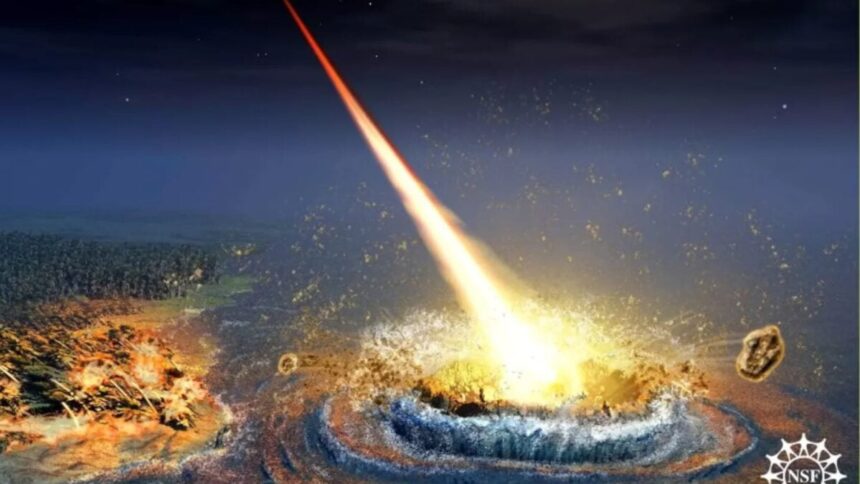Around 35 million years ago, a small asteroid traveling at 40,000 miles per hour (64,373 kilometers per hour) struck Earth, crashing into the Atlantic Ocean near the modern-day town of Cape Charles, Virginia. The approximately 3-mile-wide (5-kilometer) object created a large impact crater that’s buried half a mile beneath Chesapeake Bay. Hundreds of miles south of the crater, scientists have found new evidence of the asteroid impact and the tsunami that followed the shattering event.
Hidden beneath the waters of the Chesapeake, the impact crater in Virginia is among the largest and most preserved craters found on Earth. The Chesapeake Bay crater was first discovered in 1990, and scientists are still trying to piece together the trail of destruction left by the asteroid. A team of geologists investigating fossils in Moore County, North Carolina, uncovered layers of rock they determined were forged by the asteroid impact and the tsunami that followed.
In a recently published study in Southeastern Geology, scientists document the far-reaching impact of the asteroid collision, detailing the discovery of a site found approximately 240 miles (386 km) away from the Virginia crater in the Sandhills of North Carolina.
Rocky beds
The team of geologists behind the new study found four distinct beds of rock within a one-yard-thick layer formation at the site in Moore County. The first bed of rock is around 17 inches thick (43 centimeters) and contains sandy clay rich in carbon glass and rock fragments. The researchers also measured 14 to 18 parts per billion of iridium, a rare chemical element that’s often found in meteorites that land on Earth.
The second bed of rock, measuring at only about 3 inches thick (9 centimeters), contained silt and loosely bound masses of quartz and carbon, as well as 2 to 6 parts per billion of iridium. Bed number 3 is a mix of soil and seafloor fragments and measures at around 2 inches thick (6 centimeters), while the fourth bed of rock is around 6 inches (15 centimeters) of coarse sand that may have been deposited by a tsunami.
The geological makeup of the different rock beds made no sense when examined on its own, but the researchers behind the study traced it to the ancient asteroid that struck Virginia millions of years ago.
Tsunami warning
Around 35 million years ago, when the asteroid struck Earth, the impact created a hypersonic shock wave that destroyed plants and animals for hundreds of miles in each direction and rained huge amounts of molten debris in the area that stretches from Massachusetts to Barbados.
When it was first discovered, scientists speculated that the impact that hit the Atlantic Ocean also likely caused a massive, far-reaching tsunami, but they had not found actual remains of it. The new study suggests that the strange rock formation in North Carolina traces all the way back to that fateful day when the asteroid struck Earth millions of years ago.
The first rock bed records the initial impact, rich with ejecta and carbon-rich debris that had settled into the channel within the first minutes. Rock bed number two is an accumulation of the finer particles that were ejected as the plume thinned, while the third rock bed is a record of the inland surge of seawater and sediment. Finally, the fourth rock bed is when water refilled the channel with clean sand and gravel.
The new finding adds further clarity to the Chesapeake Bay impact and how far-reaching it really was. As we’re learning, this lone asteroid, through this single cataclysmic encounter, reshaped an entire region so many million years ago.
Read the full article here












